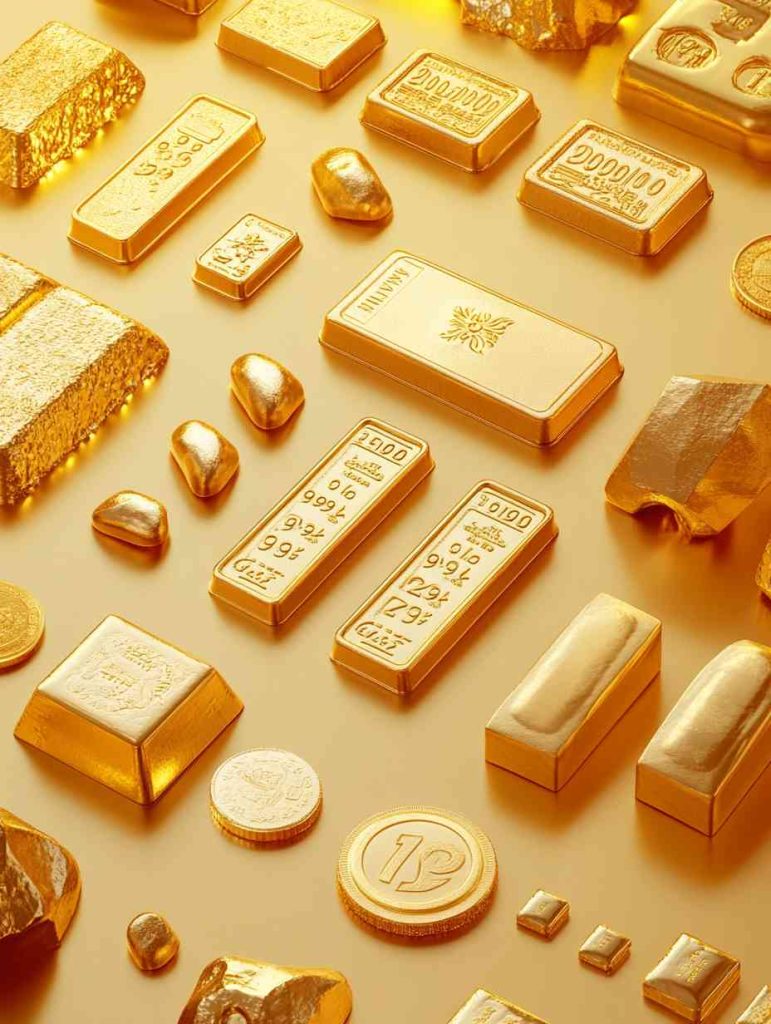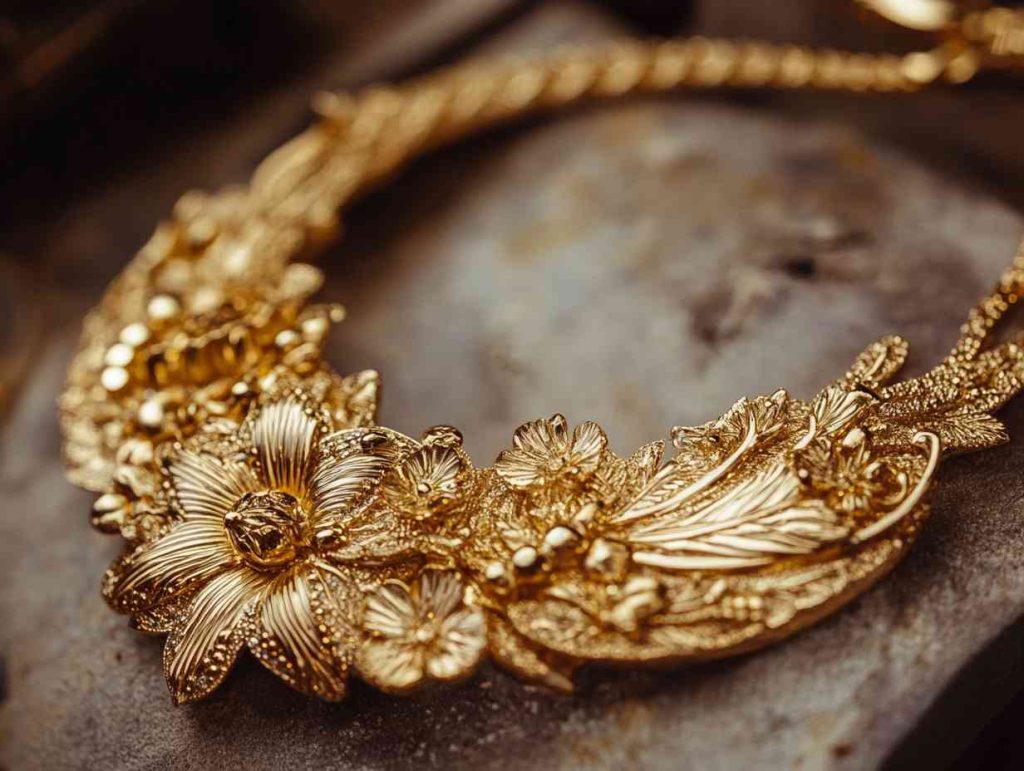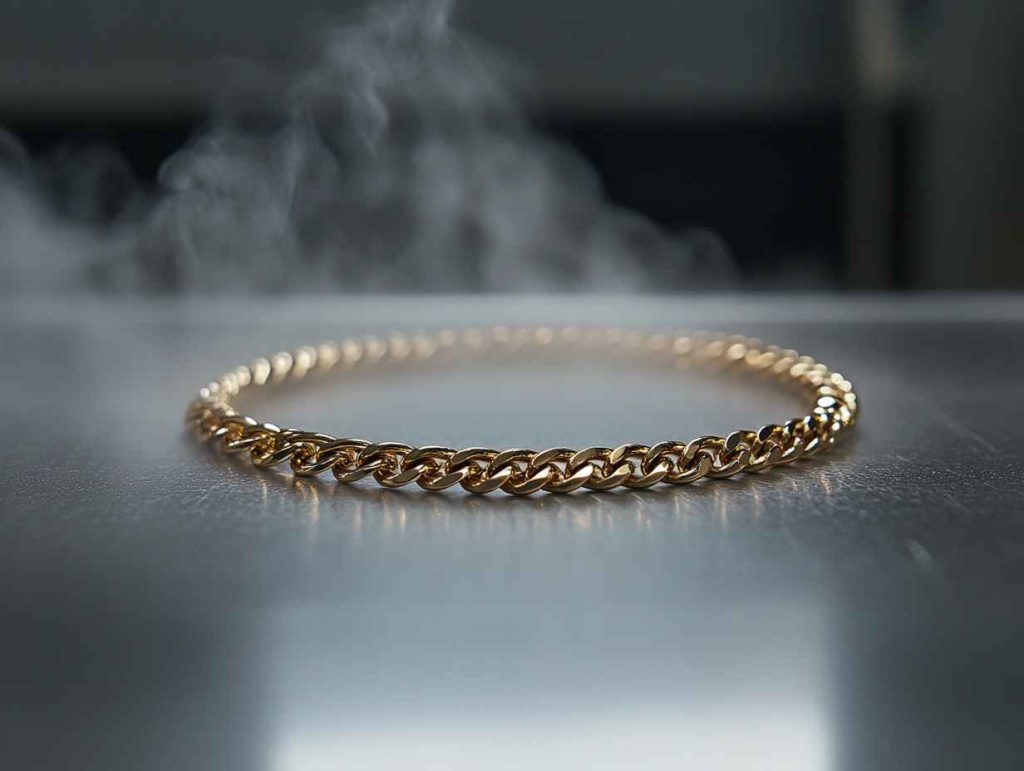Gold necklaces are timeless pieces that add elegance and value to any outfit.
However, with the rise of counterfeit jewelry, you might find yourself wondering, “How can I tell if my necklace is real gold?” or “How to know if a necklace is real gold?”
Don’t worry!
In this guide, we’ll walk you through several reliable methods to determine whether your necklace is made of genuine gold.
Understanding Gold Purity and Hallmarks
Before testing your necklace, it’s essential to understand gold purity and common markings.
Gold Purity Levels
10 Karat (10K): 41.7% gold (the minimum standard for gold in some countries).
24 Karat (24K): Pure gold (99.9% gold). It’s soft and not commonly used for jewelry.
22 Karat (22K): 91.6% gold mixed with other metals.
18 Karat (18K): 75% gold.
14 Karat (14K): 58.5% gold.
💡 Curious about purity? Learn more in our blog on 22K vs 24K Gold for Jewellery.

Common Hallmarks
- Karat Marks: Look for stamps like 24K, 22K, 18K, 14K, 10K.
- Numeric Marks: Numbers like 999 (24K), 916 (22K), 750 (18K), 585 (14K), 417 (10K) indicate gold purity.
- Other Marks: Words like “GF” (Gold Filled), “GP” (Gold Plated), “GE” (Gold Electroplated) suggest the item is not solid gold.
⚠️ Note: Absence of a hallmark doesn’t necessarily mean your necklace isn’t gold, especially in vintage pieces.
Methods to Test If Your Necklace Is Real Gold
1. Visual Inspection
Tools Needed: Magnifying glass or jeweler’s loupe.
- Check for Hallmarks: Examine the clasp or the inner part of the necklace for karat stamps.
- Inspect for Discoloration: Real gold does not tarnish or rust. If you notice discoloration, peeling, or flaking, it might be gold-plated or fake.
- Look for Wear: Gold plating may wear off, revealing a different metal underneath.
Limitations: Some counterfeit jewelry may have fake hallmarks.
💡 For more details on inspecting jewelry, explore How to Care for Jewellery.
2. Magnet Test
Tools Needed: Strong magnet (neodymium magnet is ideal).
- Procedure:
- Place the magnet close to your necklace.
- Observe if the necklace is attracted to the magnet.
Interpretation:
- Real Gold: Non-magnetic and will not be attracted.
- Fake Gold: If it sticks to the magnet, it’s likely made of iron, nickel, or other magnetic metals.
⚠️ Note: Some non-magnetic metals can mimic gold, so this test isn’t foolproof.
3. Skin Test
- Procedure:
- Wear the necklace for a day.
- Observe any skin reactions or discoloration.
Interpretation:
- Greenish Skin: May indicate copper or brass content.
- Black Marks: Could suggest the presence of silver or fake gold.
- No Reaction: Real gold is hypoallergenic and shouldn’t cause skin discoloration.
💡 Gold jewelry often matches better with your skin tone. Read more in What Colour Jewelry Should I Wear.
4. Ceramic Scratch Test
Tools Needed: Unglazed ceramic plate or tile.
- Procedure:
- Gently drag the necklace across the ceramic surface.
- Observe the color of the streak left behind.
Interpretation:
- Gold Streak: Indicates real gold.
- Black or Dark Streak: Suggests the necklace is not gold or is gold-plated.
Warning: This test can scratch your jewelry.
5. Float Test
Tools Needed: Clear glass of water.
- Procedure:
- Drop the necklace into the water.
Interpretation:
- Sinks Immediately: Gold is dense and should sink.
- Floats or Hovers: Likely not real gold.
⚠️ Warning: This can scratch your necklace.
6. Nitric Acid Test
Tools Needed: Nitric acid, small scratch stone, protective gear (gloves, goggles).
- Procedure:
- Make a small scratch on an inconspicuous part of the necklace.
- Apply a drop of nitric acid to the scratch.
- Observe the reaction.
Interpretation:
- No Reaction: Real gold remains unaffected.
- Green Reaction: Indicates a base metal like copper or nickel.
- Milky Appearance: Suggests gold-plated sterling silver.
⚠️ Caution: Nitric acid is hazardous. Consider seeking professional help for this test.
7. Density Test
Tools Needed: Scale (grams), measuring container (milliliters), water.
- Procedure:
- Weigh the necklace to get its mass.
- Fill the container with a specific amount of water.
- Submerge the necklace and measure the new water level to find the volume displaced.
- Calculate density: Density = Mass ÷ Volume Displaced.
Gold Densities:
- 24K Gold: ~19.3 g/cm³
- 18K Gold: ~15.6 g/cm³
- 14K Gold: ~13.3 g/cm³
Interpretation:
- If the calculated density matches the density of real gold, your necklace is likely genuine.
Note: Requires precise measurements; not practical for small or intricate necklaces.
8. Professional Appraisal
- Visit a Jeweler: A professional can perform advanced tests like X-ray fluorescence (XRF) analysis.
- Benefits:
- Accurate results.
- Can provide certification or appraisal documents.
Tips to Ensure You’re Buying Real Gold
- Buy from Reputable Jewelers: Established sellers are more likely to offer genuine products.
- Ask for Certification: Request a purity certificate or proof of authenticity.
- Be Wary of Deals Too Good to Be True: Extremely low prices may indicate fake gold.
- Understand Gold Pricing: Know the current market price to gauge if the cost aligns with gold’s value. 💡 Check out Jewellery Shops in Bangladesh for a list of trusted jewelers.
Frequently Asked Questions
Q: Can gold tarnish over time?
- Pure gold (24K) doesn’t tarnish. However, alloys like 10K or 14K may tarnish due to mixed metals.
Q: Is real gold always non-magnetic?
- Yes, pure gold is non-magnetic. If your necklace is attracted to a magnet, it’s likely not real gold.
Q: Can I clean my gold necklace at home?
Yes! Learn how to safely clean your jewelry in How to Wash Gold Jewellery.
Final Thoughts
Determining whether your necklace is real gold doesn’t have to be a mystery. By combining these methods, you can confidently assess your jewelry’s authenticity. While home tests are helpful, consulting a professional remains the most accurate approach.
💡 Looking for more jewelry insights? Explore:
Celebrate your gold necklace’s timeless beauty with confidence!

